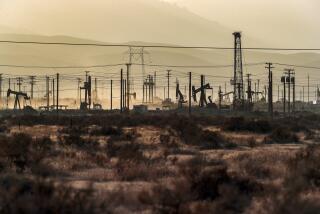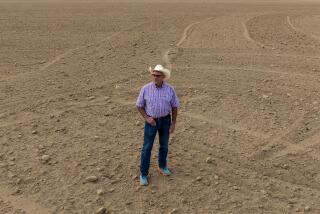Kern County’s rich oil field of history
Anywhere else, linking an aromatic cup of coffee and a gooey glob of oil would quickly kill a restaurant.
Not so in Taft, Calif., the Taft Crude Coffee House is a popular stop for hot coffee or iced mocha.
And in an era when oil spills tend to be environmental disasters, people here are happy to provide directions to the Lakeview Gusher, even though it spewed more than 9 million barrels of oil, nearly twice the amount spilled in 2010 from the Deepwater Horizon, the ill-fated British Petroleum rig in the Gulf of Mexico. Over 18 months in 1910 and 1911, the Taft-area spill turned the local landscape into a tar-coated wasteland.
As it has for decades, oil courses through this town’s veins. During the Dust Bowl years, people moved west not only to work the San Joaquin Valley’s fertile farm fields but also its oil fields. People still speak with a distinctive twang.
“You know, Bakersfield is the fourth-largest city in Oklahoma,” said Taft resident Fred Holmes during a chat at Taft’s West Kern Oil Museum. It and a museum in Bakersfield educate visitors about the oil industry, second only to agriculture in Kern County and one that has made many people rich.
Holmes is among them. It took a little prying, but eventually he acknowledged that he owns and operates oil wells in the countryside surrounding Taft.
Countywide, Kern produces 400,000 barrels a day. In some spots, California crude still oozes to the surface of its own accord.
“We’re still up there in the top 10 in oil production in the U.S.,” said Bill St. Claire, a retired oilman who now leads visitors through “Black Gold: The Oil Experience” at the Kern County Museum in Bakersfield.
Tours begin inside a lifelike diving bell that appears to plunge guests to the ocean floor before continuing on into the Earth’s core.
“Some [visitors] think we actually are going down. It does give you that impression,” St. Claire said.
During the “dive,” the region’s geological history can be seen through the portholes. The San Joaquin Valley was once an inland sea and, as guests learn, over the millenniums, heat and weight turned the plant and animal remains into oil.
The museum displays a range of everyday products that begin with petroleum — diapers, stuffed toys, an array of plastic products — while acknowledging modern efforts to use alternatives.
Of course, that long list of petroleum products includes gasoline. Outdoors, on the county museum’s grounds, are structures related to the oil industry, including an old filling station and a boardinghouse for workers.
In Taft, about 40 miles southwest, it’s impossible to miss the West Kern museum. A 10-story wooden derrick sits on the site of a former oil camp.
With the well tapped out, the Jameson Oil Co. donated the three-acre site in 1974 as the genesis of a repository of oil history. Visitors now wander the grounds, which include a school and old-time doctor’s office.
“Taft sits atop the Midway Sunset field,” said Don Maxwell, a museum volunteer and descendant of two generations of oil workers. “Taft was like an island. It was landlocked by the oil companies.”
In downtown Taft, the new Oilworker Monument pays tribute to “those who supplied the energy to build a nation.” It was unveiled in 2010 and features life-size brass sculptures of hard-hatted laborers.
More to Read
Sign up for The Wild
We’ll help you find the best places to hike, bike and run, as well as the perfect silent spots for meditation and yoga.
You may occasionally receive promotional content from the Los Angeles Times.






